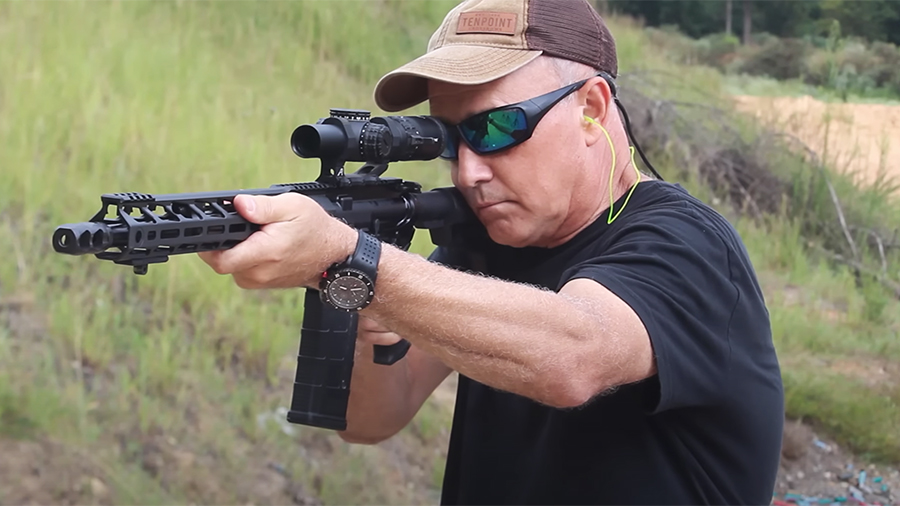On its third-quarter analyst call, Chris Killoy, president and CEO, said new products are selling strong but sales of modern sporting rifles and polymer centerfire pistols remain soft as inflationary pressures “constrained discretionary spending.”
In the quarter ended September 30, revenues were $139.4 million against $178.2 million a year ago. Net income fell 47.8 percent to $18.4 million, or $1.03 a share, from $35.2 million, or $1.98, the prior year.
The profitability decline reflected a decline in gross margin from 36 percent to 28 percent, driven by unfavorable deleveraging of fixed costs, resulting from decreased production and sales, as well as inflationary cost increases in materials, commodities, services, energy and fuel, which were partially offset by increased pricing.
Third-quarter results benefited from an unusually low effective income tax rate of 12.3 percent compared to 26.7 percent for the third quarter of 2021. The decrease in the 2022 effective tax rate was attributable to research and development tax credits, primarily related to credits earned in prior years, which were realized through amended income tax returns in 2022. The impact of research and development tax credits on the effective tax rate is expected to decline in future years.
For the nine months, sales fell 20.6 percent to $446.6 million from $562.7 million a year ago. Net income was cut 41.1 percent to $69.4 million, or $3.90, from $117.8 million, or $6.64.
Killoy noted that consumer demand remained “consistent” with the second quarter with overall demand remaining below 2021 levels. For the first nine months of 2022, NICS background checks as adjusted by The National Shooting Sports Foundation (NSSF), decreased 14 percent.
He said the inflationary pressures particularly impacted items that had seen a “significant surge in demand” over the past few years, including most modern sporting rifles and polymer centerfire pistols.
“New products tend to fare better in this type of environment, and our new product development teams delivered three innovative firearms in the third quarter that were received with great enthusiasm and excitement,” said Killoy.
These include the LC Carbine, a companion carbine to the successful Router 5.7 pistol, the SFAR rifle (small-frame auto-loading rifle) chambered in 308 Winchester, and the Marlin Model 1895 Guide Gun, marking the first reintroduction of the Marlin Guide Gun family of lever-action rifles and Ruger’s first introduction of an alloy steel Marlin rifle with a blue finish.
Total sales in new products, which also include the PC charger, the MAX-9 pistol, the LCP MAX pistol, and the Marlin 1895 SBL and Trapper lever-action rifles, represented $54.9 million or 13 percent of firearm sales in the first nine months of 2022.
Several popular firearms that were considered new products in 2021, including the Wrangler Revolver, the Ruger 5.7 pistol, and the LCP II and 22 Long Rifle, have now been in production for over two years and are no longer included in the new product sales calculation for the first nine months of 2022.
Killoy said the company continues to invest in developing additional Ruger and Ruger-made Marlin firearms while prioritizing legacy products that remain in strong demand, many of which remain undersupplied in the marketplace. These include the American centerfire rifles, 10/22 rimfire rifles, the Mini-14 and Mini-30 rifles, its Precision Rifles, the SR1911 family of pistols, and Ruger’s single-action and double-action revolver families.
Asked about order demand in the Q&A section of the analyst call, Killoy said demand for new products remains strong but modern sporting rifles and the centerfire polymer-framed pistols are seeing some pressure with elevated inventories in the marketplace. He said, “There is a lot of inventory, both at retail and some of the distributors as well. We’re seeing a lot more promotional efforts, we’re seeing things like rebates and discounting going on and likely going to see that at least through the first quarter.”
Asked whether he sees a “softer landing” versus historical cycles due to overall macroeconomic pressures, Killoy said he believes dealers are “managing their inventory a little wiser” than in some past cycles.
“In conversations just last week at the National Association of Sporting Goods Wholesalers, it sounds like most of our distributors are all current with their retailers largely and not seeing much in the way of past due accounts, which is good and that’s a positive indicator. So, I don’t know if I call it a softer landing, but it’s again positive indicators,” said Killoy. “And, of course, the demand for our legacy products remain strong, things like the 10/22s, our Bolt-Action Hunting Rifles, etc. you know, 1911s and you know single-action and double-action revolvers help us I think whether some of these downturns that are focused on certain categories. That’s where the broad range of products that we have in our arsenal I think helps us a little bit.”
Photo courtesy Sturm, Ruger
















